Can laminate be laid?
In short, laminate can be safely used in the kitchen, but it is important to first study its strengths and weaknesses. Such an integrated approach will allow you to choose a high-quality coating and save your money.
The main dangers for laminate are moisture, increased likelihood of chips and scratches. But currently there are quite durable varieties that can easily help avoid these risks.
I will tell you about choosing the optimal wear resistance class and other characteristics below, but now let’s study its pros and cons.
Using laminate as a floor or wall covering in the kitchen has a number of main advantages:
- Ease of delivery and installation. Unlike roll linoleum, which is not always convenient to lift into an apartment, laminated boards are sold in compact, convenient packages. Easy to lay, easy to cut.
- A variety of design options. Due to the wide range of patterns and colors, it looks appropriate in most interiors.
- Tactility. The warm surface often imitates wood texture, it is pleasant to walk on.
- Can be laid on a heated floor. Which is especially important for private houses and cold apartments.
- Hygiene. Although there are joints between the slats, they are practically invisible and dirt does not get into them. Therefore, washing the floor is a pleasure.
- The cost including installation will be cheaper than tiles or porcelain tiles.
- The shock-absorbing properties of laminate will be useful to every housewife in the kitchen and will help to save dishes that may accidentally fall.
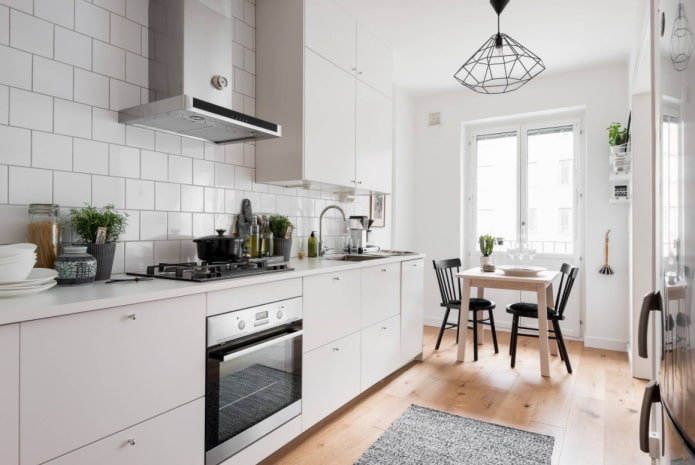
Laminate also has its disadvantages:
- High probability of chips, scratches. During cooking, there is a chance of dropping a sharp knife or a heavy pan, which can damage the decorative layer of the flooring. Unlike natural wood, sanding will not save, because this can erase the top layer.
- Low-quality panels emit dangerous formaldehyde. The substance is recognized as a carcinogen, so be sure to check the certificates of conformity before purchasing.
- The smooth surface becomes slippery when wet and you can slip.
- Complex repair of individual panels. While it is fairly easy to deal with small scratches or creaking, in case of serious damage you will have to disassemble the surface.
- Restrictions on cleaning. It is not recommended to use hard brushes or caustic chemicals. Otherwise, the laminate surface will wear off and you will get noticeable scratches and a lack of a protective layer, which will lead to swelling and subsequent damage.
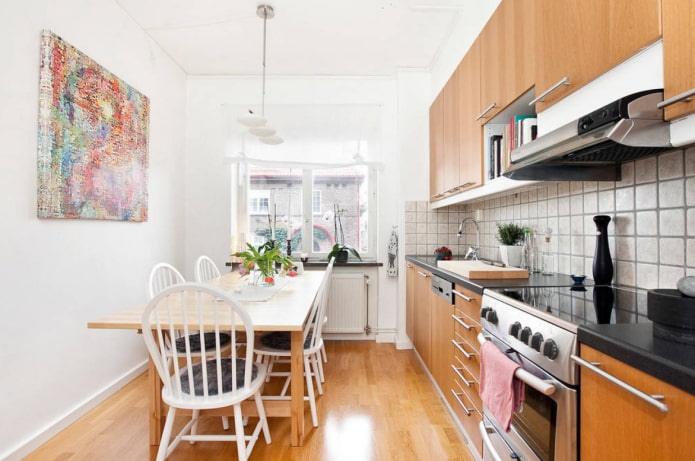
Which laminate is better to choose?
In many characteristics (wear resistance, moisture resistance), laminate is inferior to tiles or porcelain stoneware. But this does not mean that it is better to choose tiles: high-quality laminate flooring will last at least 10 years, so there is nothing to be afraid of. The main thing is to learn how to choose laminate for the kitchen correctly.
The most important thing is the wear resistance class of the laminate. The higher it is, the more serious impact the surface can withstand. The highest resistance to abrasion is in class 34, it is even laid in hotel lobbies or cafeterias. Manufacturers cover almost all models with a water-repellent composition, which makes class 34 an excellent choice for the kitchen.
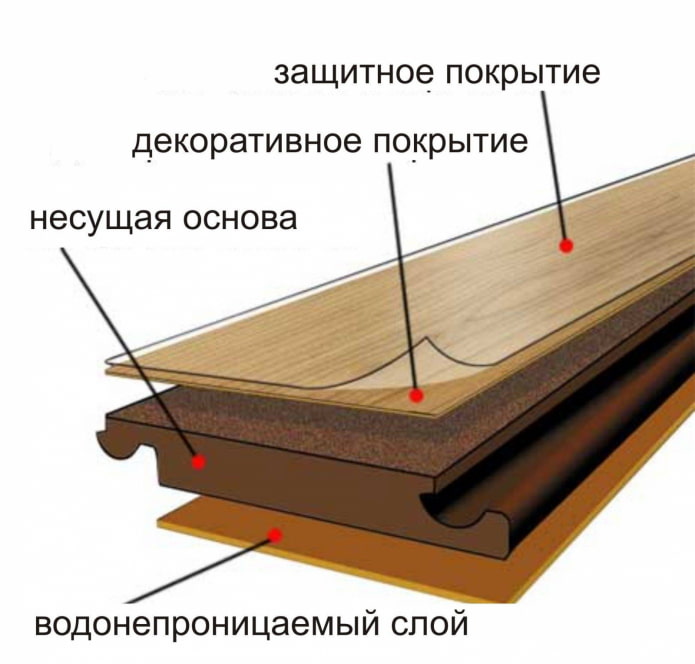
Important! Water-resistant models are marked waterproof, aqua protect. Or drawings in the form of a drop of water, a mixer.
You have to pay for quality, so the cost of the highest class cannot be called budget. To save a little, you can buy laminate models of class 33 for the kitchen.
The top layer is resistant to abrasion, withstands high loads, but the base is sensitive to moisture. Therefore, it is better to additionally cover the locks and open ends with a special protective compound.
Types 31 and 32 are even cheaper, but are no longer suitable for kitchens: therefore, if you do not want to re-lay the floor a year after the renovation, you should not save money from the start.
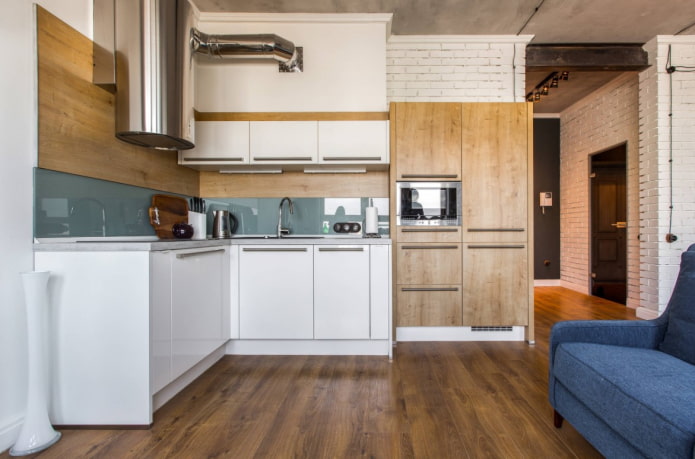
The second important nuance is the type of locking connection. There are two main ones:
- lock (cheap snap-on lock, but for installation it is important that the base is level);
- and click (a more expensive system, but such laminate is easier to lay).
In terms of hygiene, the chamfers are more important than the lock. Personally, I recommend my clients to use panels without chamfers, and to ensure that the floor is laid not as a single slab, but as separate boards, choose types with optical chamfers (dark outline along the edges). The slats will be visually separated from each other, while the absence of a real chamfer will not allow moisture or dirt to linger.
Since the load in the kitchen is quite high, and there is also an increased risk of damage, I recommend choosing panels at least 8 mm thick.
Do not forget about environmental friendliness, since budget models can have high levels of formaldehyde. Study the certificates and choose laminate with formaldehyde emission class E1 or E0.
The last fundamental difference between types of laminate for the kitchen is color and texture. The most practical is considered to be a relief surface of a neutral shade – stains and debris are not noticeable on it, the probability of slipping is reduced to zero.
Compare the photos below:
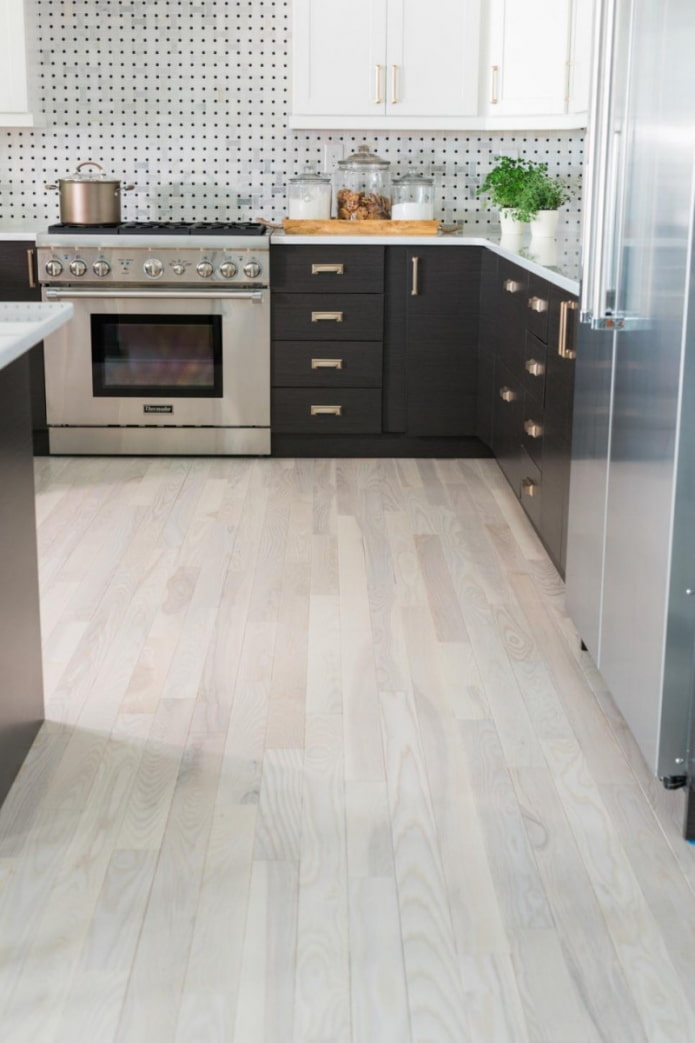
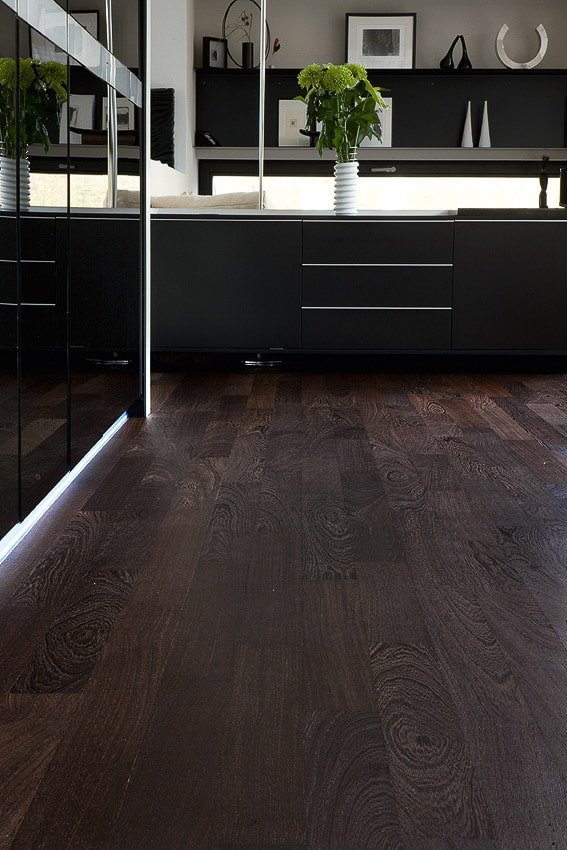
What can be finished in the kitchen?
To choose the right laminate for the kitchen, you should also understand how and where it will be used in the interior. There may be several options:
- floor;
- walls (including kitchen apron);
- ceiling.
The classic option for use is laying laminate on the entire kitchen floor. The direction in which it is laid can change the perception of the room’s geometry:
- Boards along narrow walls in a long room will expand the space, making the kitchen wider.
- Lamels laid diagonally make the room more spacious.
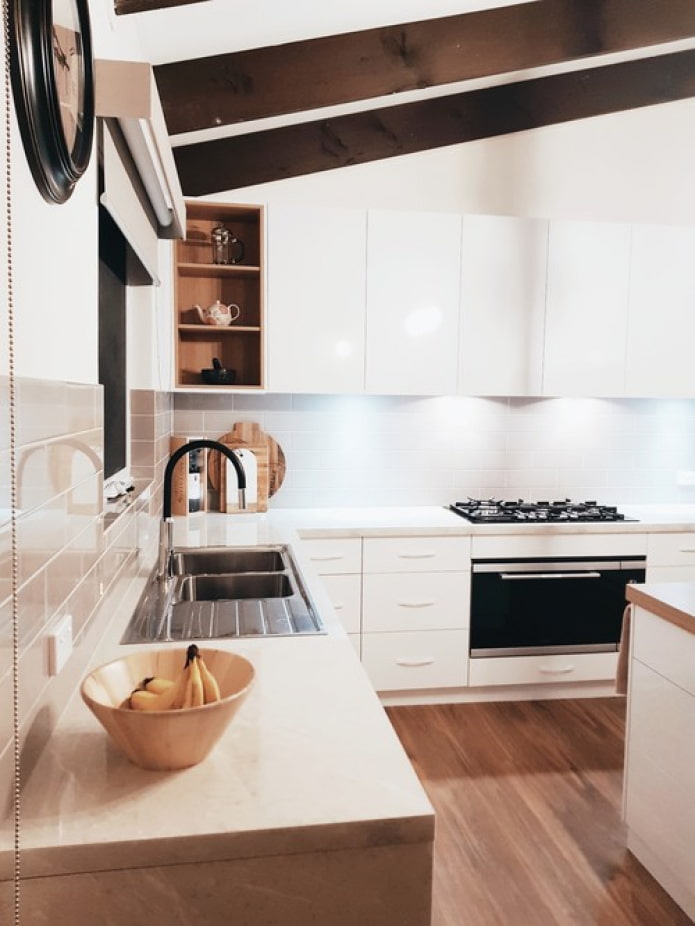
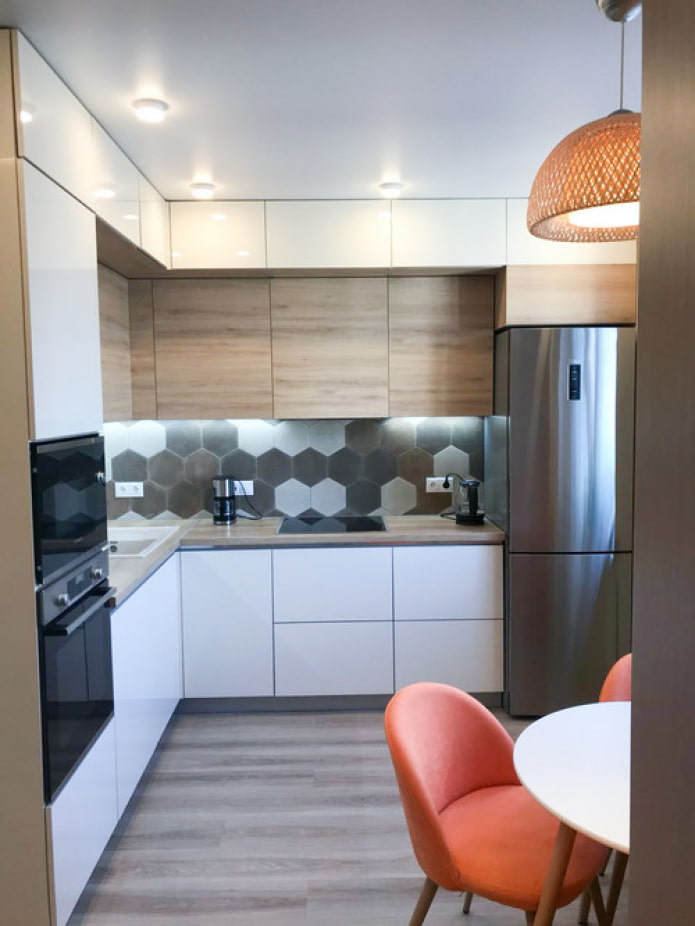
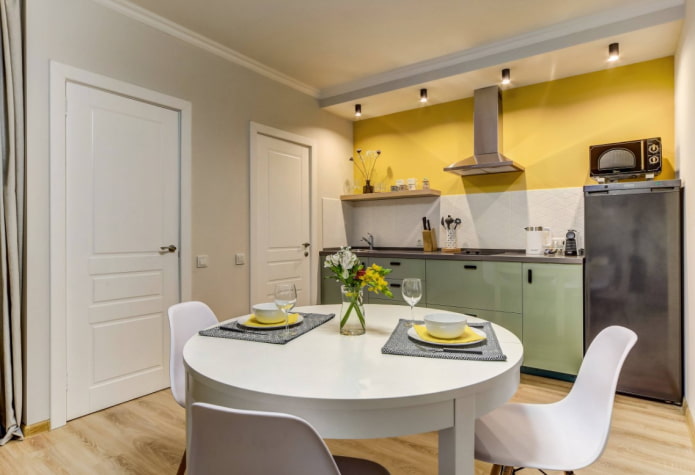
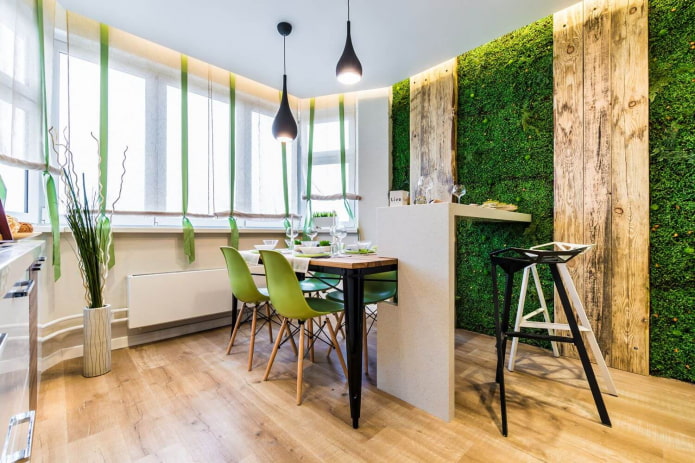
In the photo, light laminate in the kitchen under the tree perfectly matches with decorative inserts on the wall
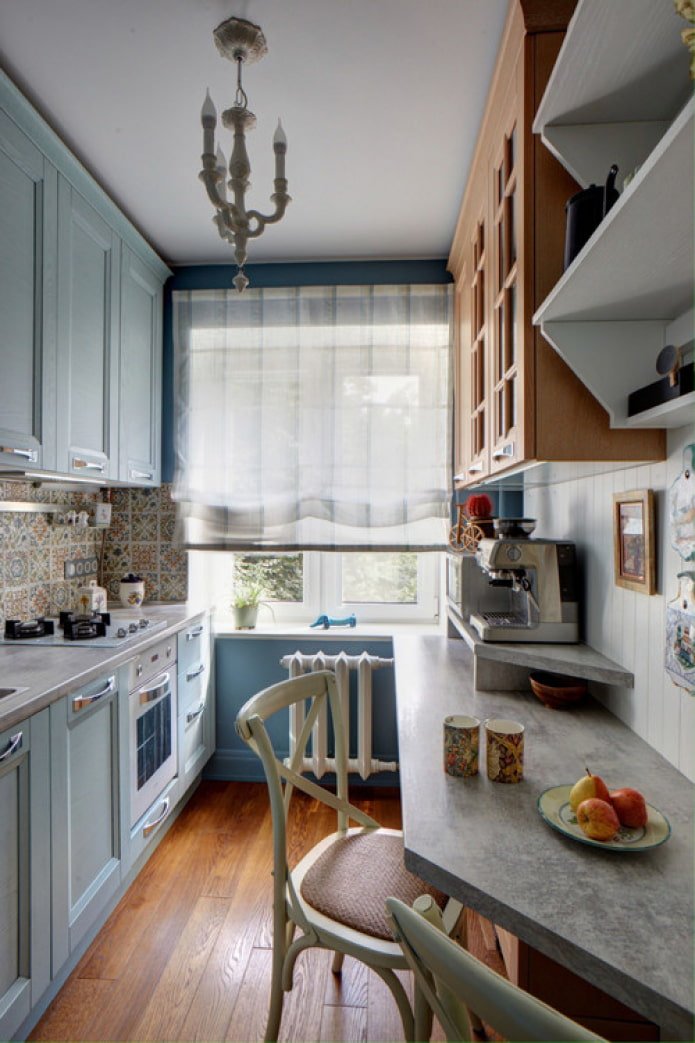
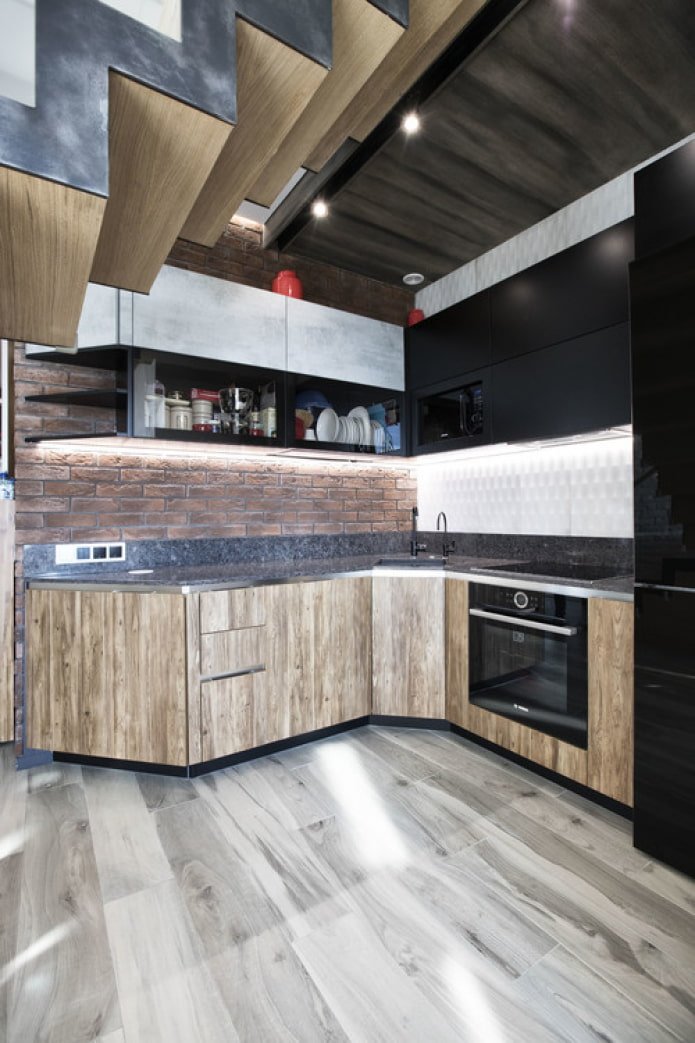
To protect the surface from impacts and chips, small rugs are laid in the work area: they will be a kind of protective buffer from falling knives and dishes.

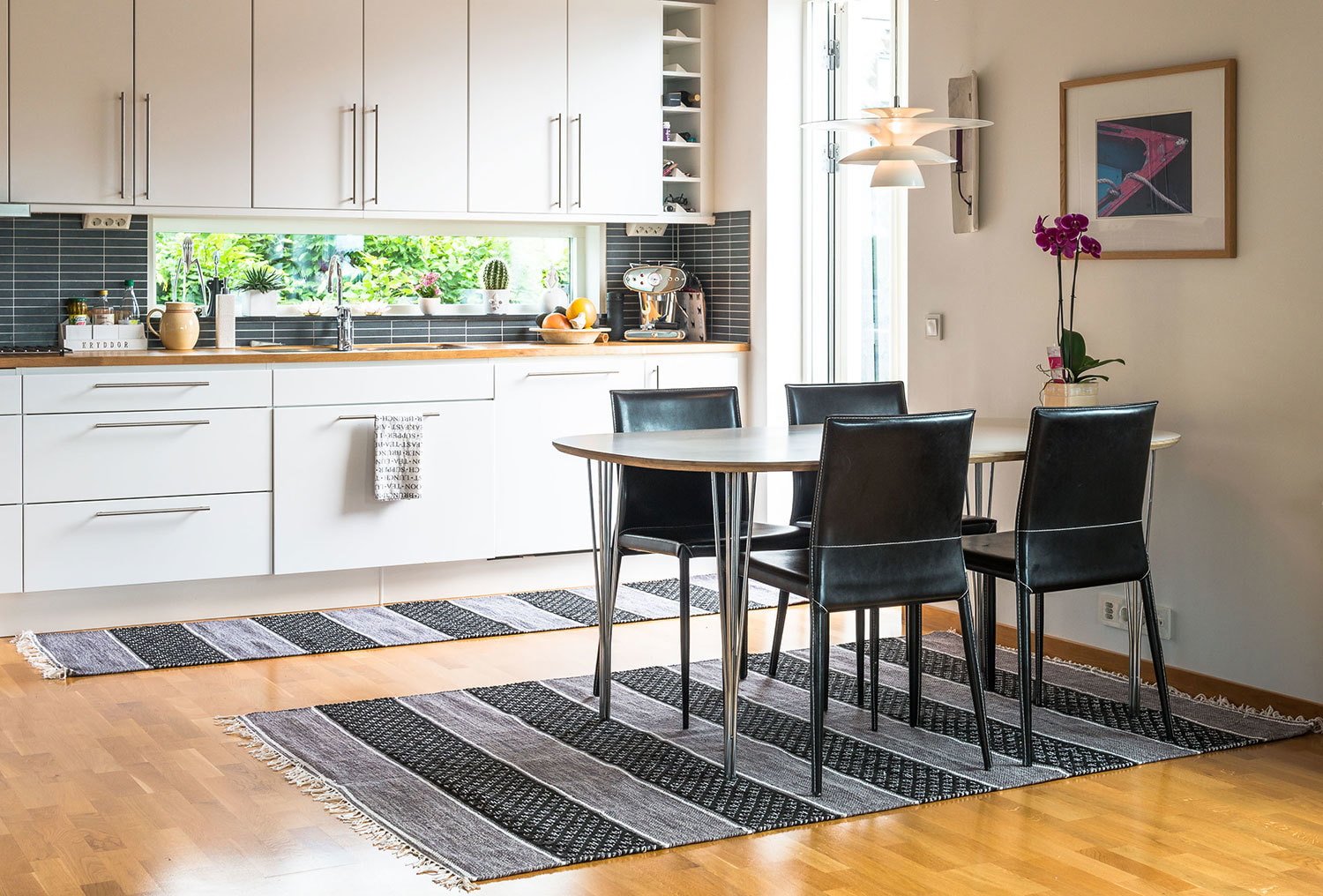

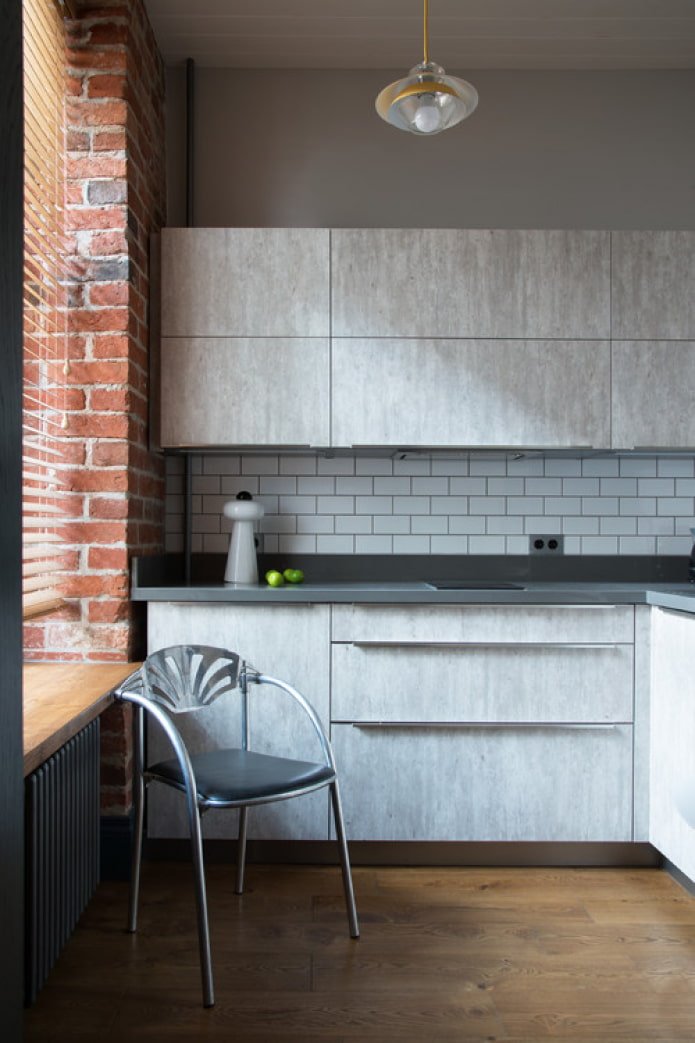
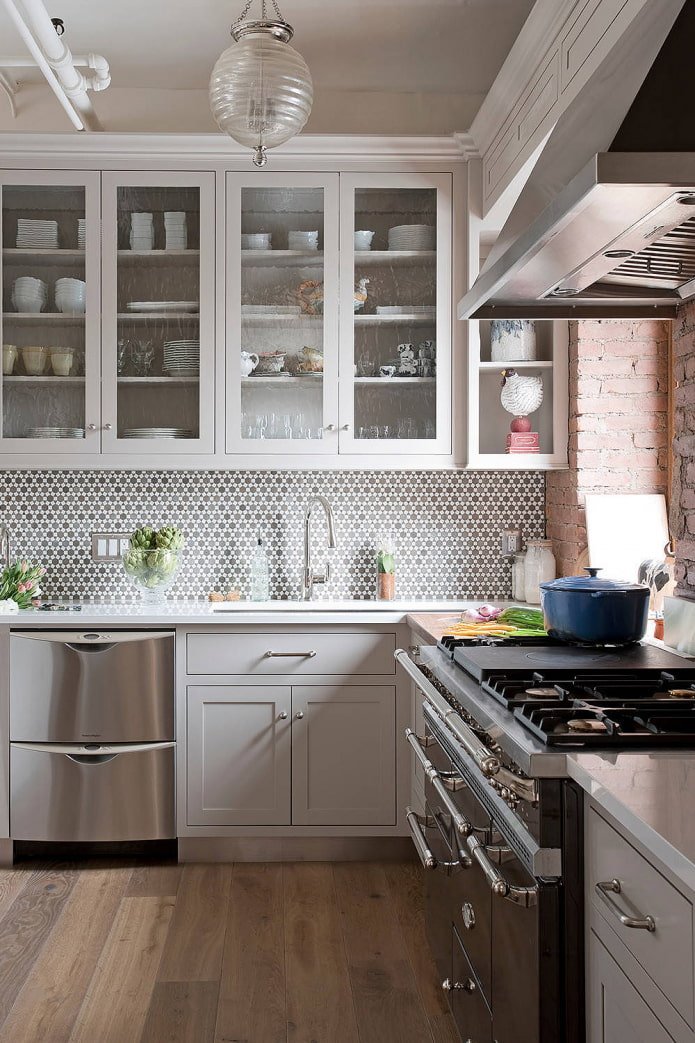
An equally popular solution is a combined shelf finish: the wet area is made of porcelain stoneware, and the rest of the surface is made of laminate. In this case, you do not have to buy the most expensive one. In addition, this is a great way to zone the kitchen.
See examples of combining tiles and laminate.
Tiles are laid 60-80 cm in the work area, the rest of the space is covered with laminate. It is important that the joint between the floorings is at the same height, so it is better to contact professionals for floor installation.
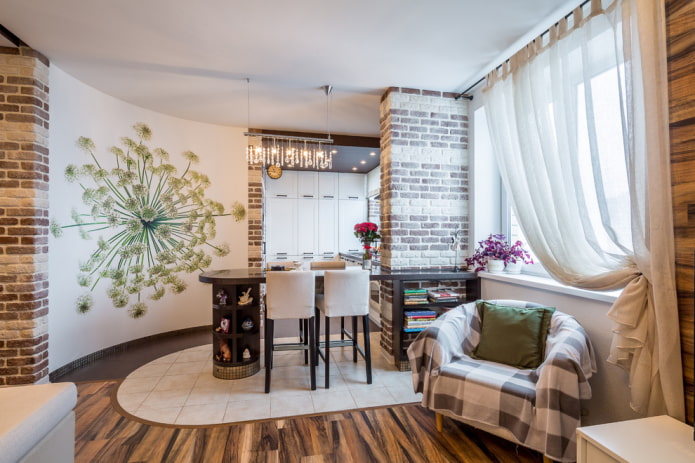
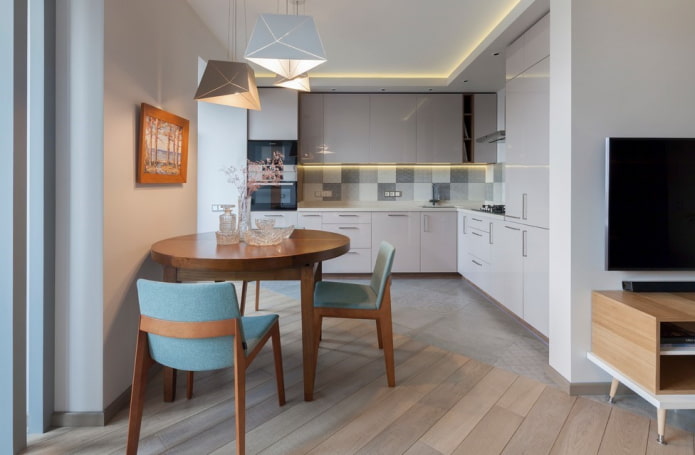
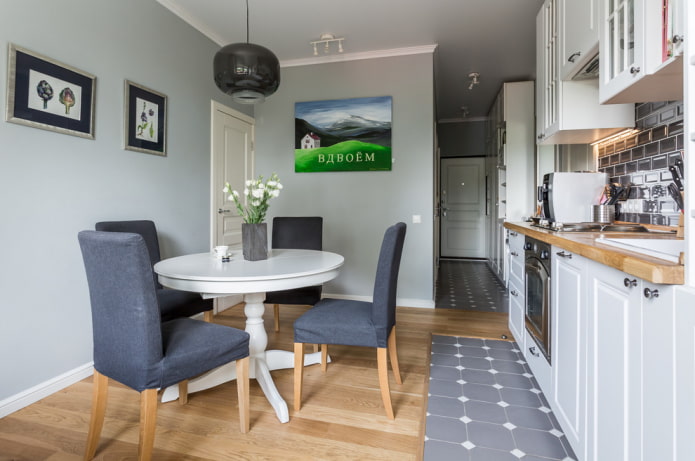

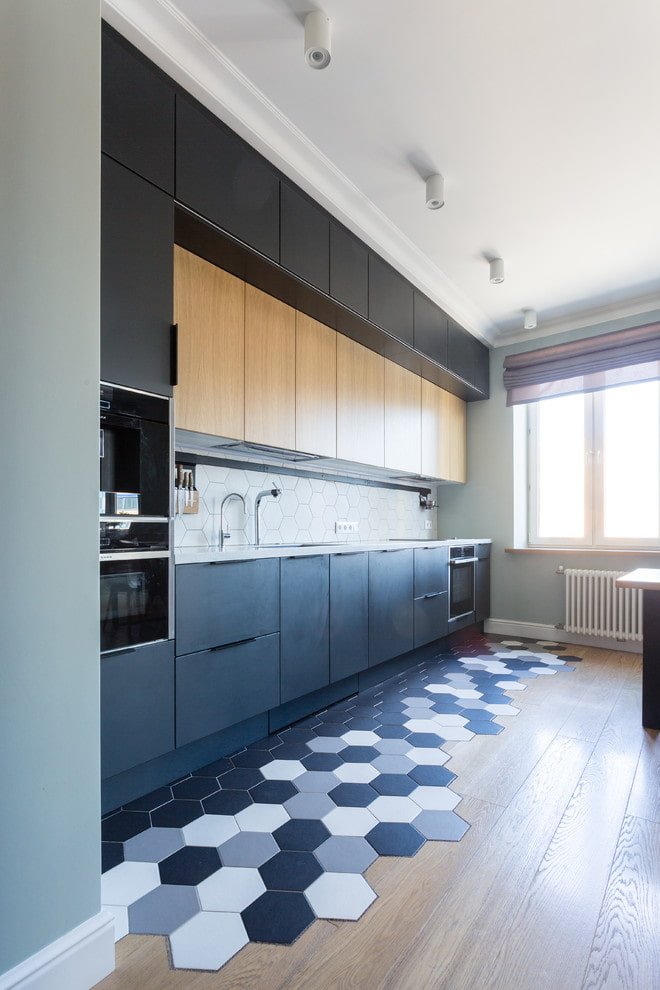

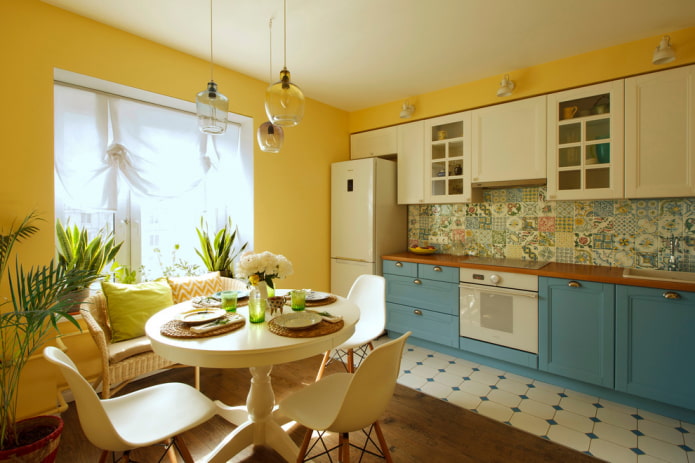
The use of laminate for wall decoration in the kitchen is quite common. You can decorate a kitchen apron, or you can make an accent wall near the dining table. It looks quite cozy. For the apron, I recommend choosing the most wear-resistant class (34).
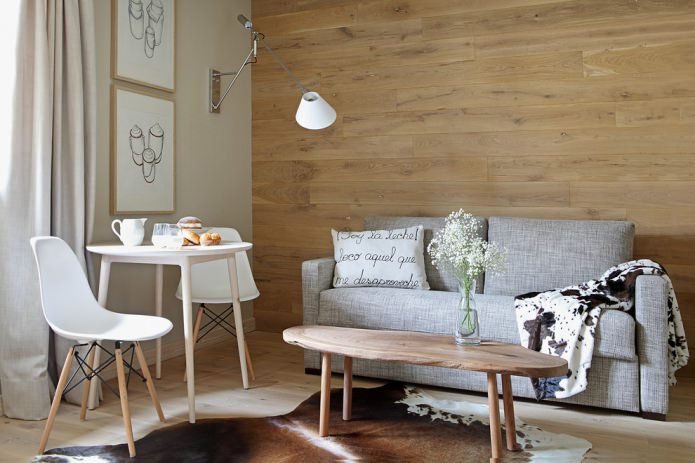




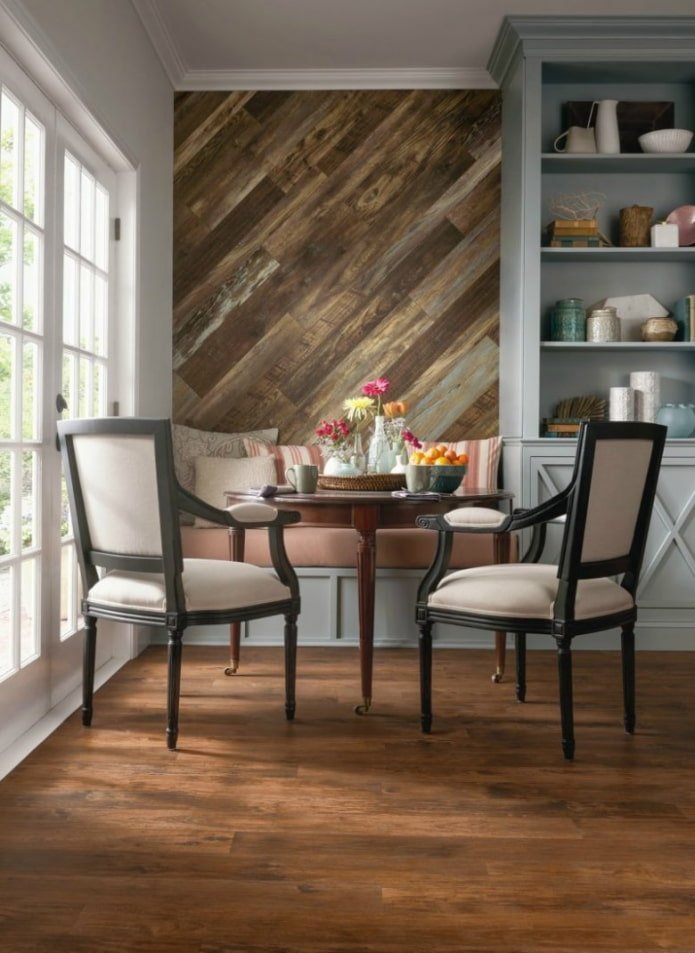
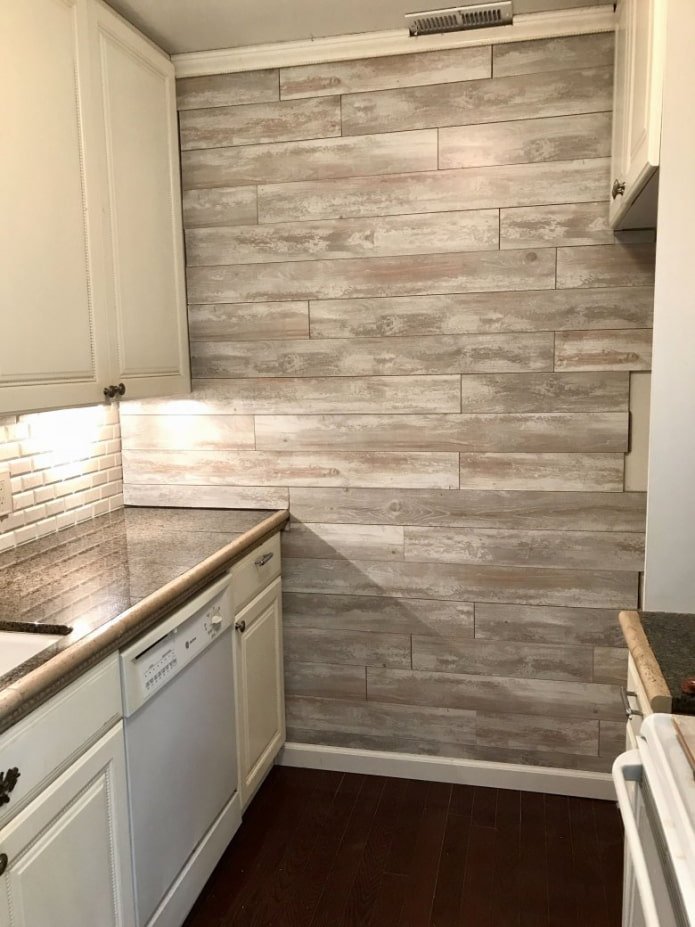
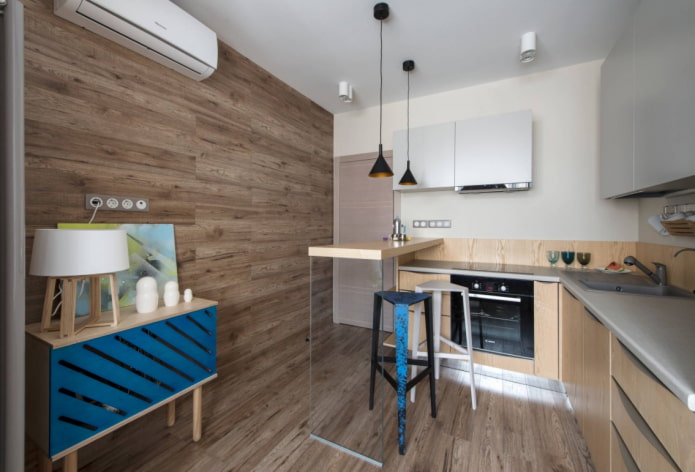
The photo shows the same surface covering for the accent wall and floor
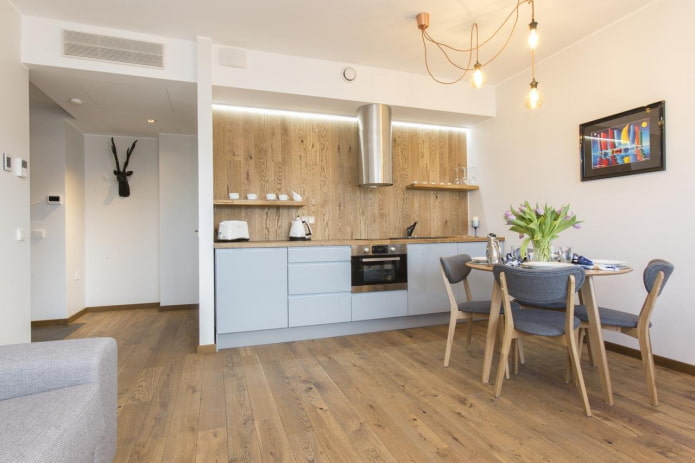
The photo shows an example of a single contour in the kitchen-living room
Finishing the ceiling with laminate is a less popular solution, but designers use it. Therefore, I think it is necessary to show you examples. Most often, it is used in the kitchen of a private house to emphasize the style and achieve maximum imitation of wood. An interesting solution would be partial finishing of the ceiling around the chandelier. Among the advantages of this solution, I can note the ease of maintenance and the fact that you do not need to level the base. At the same time, this type of finishing looks quite expensive – see for yourself.
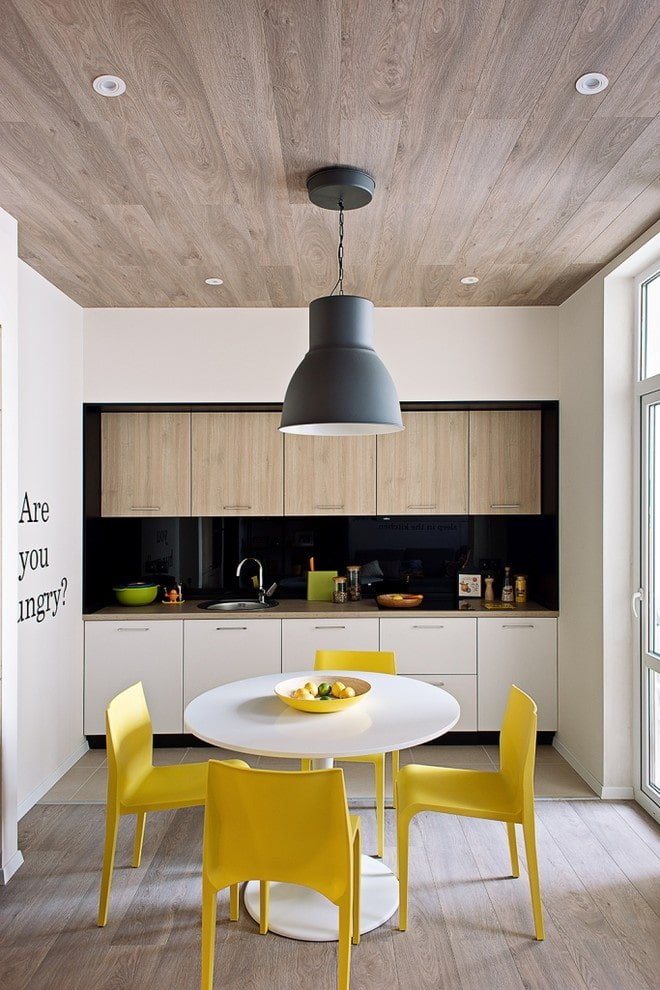
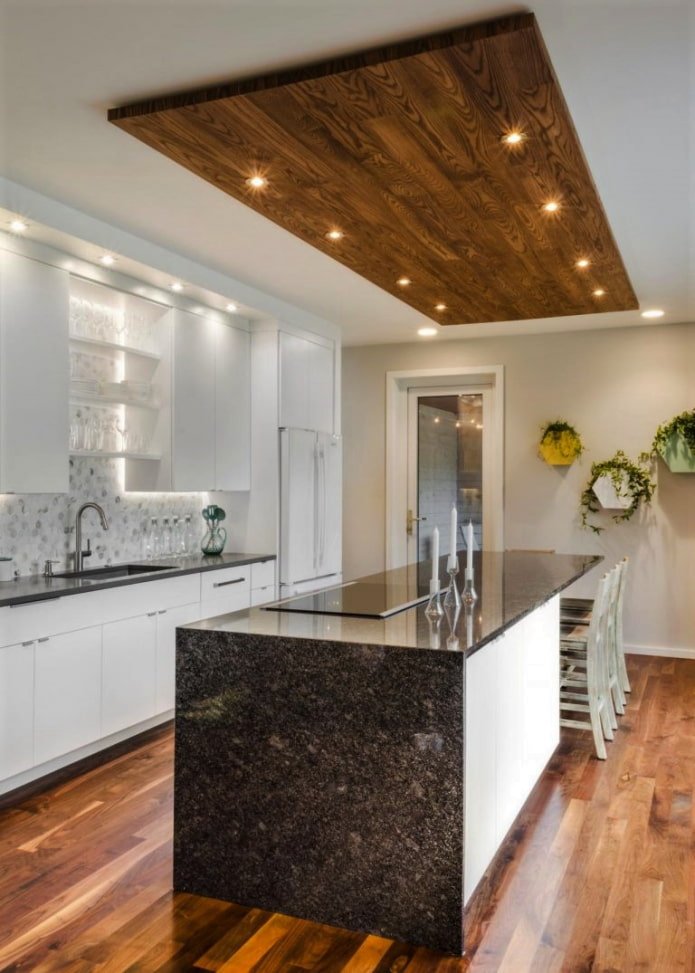
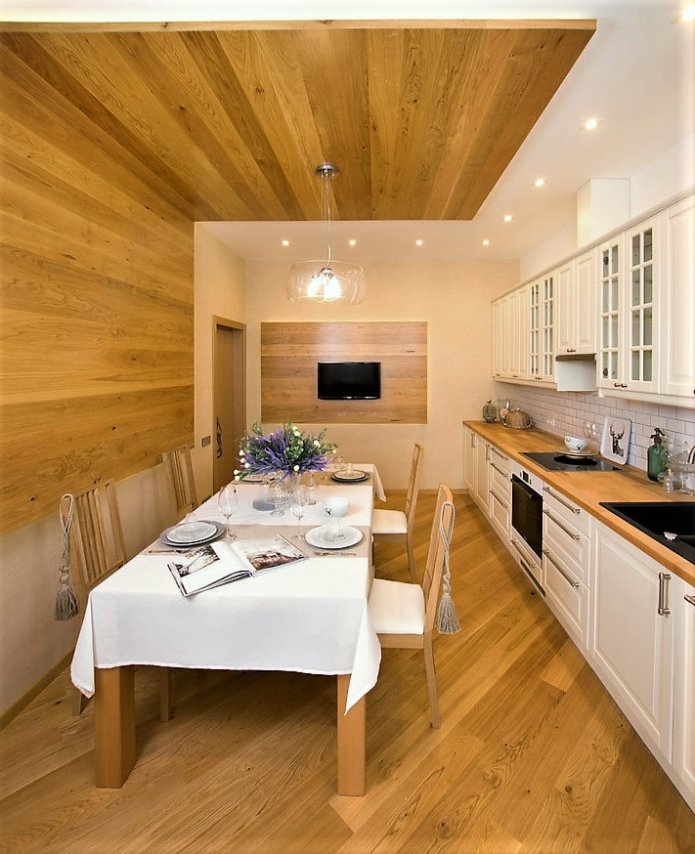
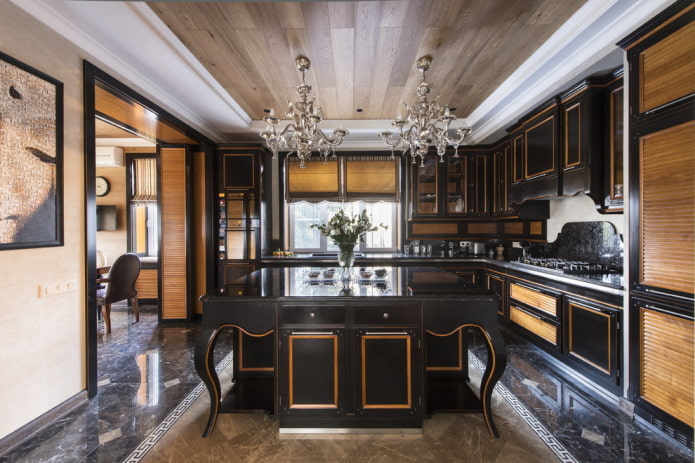
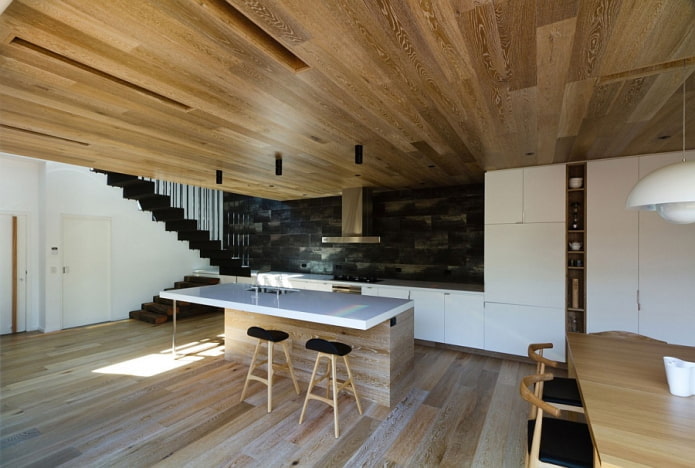
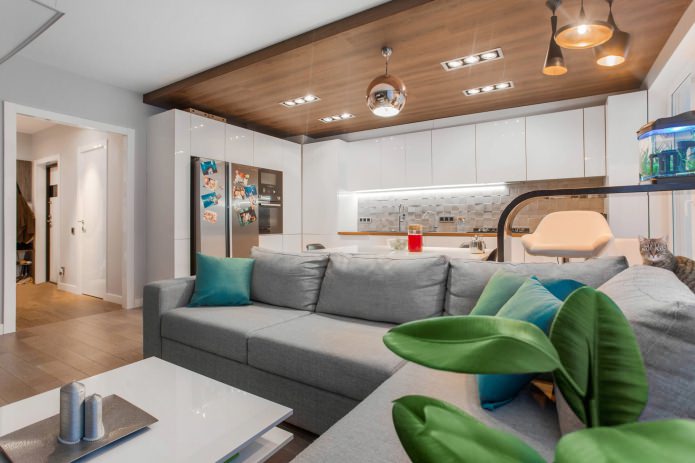
If you are good at handyman work, you can try to decorate not only the apron, but also the countertop.
Check out our article on creating homemade countertops.
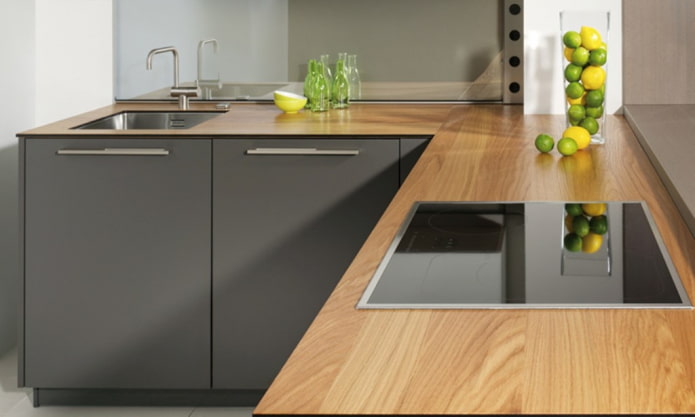
Care recommendations
There are no special requirements for laminate care – under home use in the kitchen, it is enough to vacuum with a soft brush, wipe with a damp cloth once a week. But some rules still need to be followed, because the kitchen is designed for cooking:
- Do not use abrasives. Powders, hard brushes or sponges can scratch the coating. The best choice is soft cloths, gels and liquids for washing.
- Wipe up water as quickly as possible. Spilled or dripped on the floor? Wipe immediately.
- Remove stains immediately. This is especially true for fat and coloring agents (tomato paste, carrots, beets, wine).
- Repair chips and scratches in a timely manner. Wax crayons in the color of the floor will help with this.
Important! Set up an economical water supply on the washing vacuum cleaner or robot assistant so that excess moisture does not damage the floor.
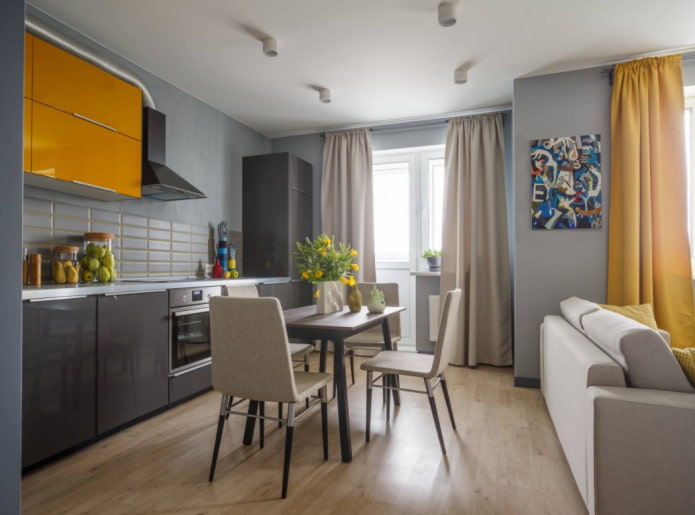
While the floors in the bedroom or living room forgive many mistakes when choosing, this will not work with the kitchen: the covering should be selected carefully, then it will last a long time.
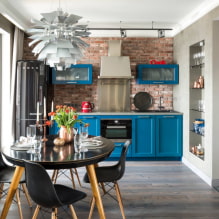
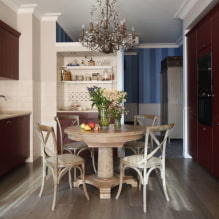
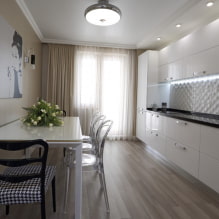
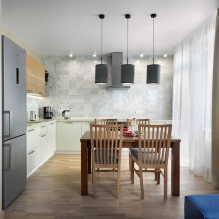
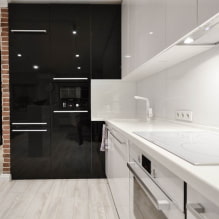
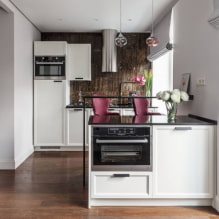
Now reading:
- Purple sofas in the interior: more than 50 photos and ideas for rooms and corners.
- effective methods for protecting windows on the first floor from prying eyes.
- Essential Guide to Buying a Used Porsche 911
- 12 beautiful and practical plants for your garden, ideal for planting under trees.
- Pink Kitchen: 55 Interior Examples and Design Tips